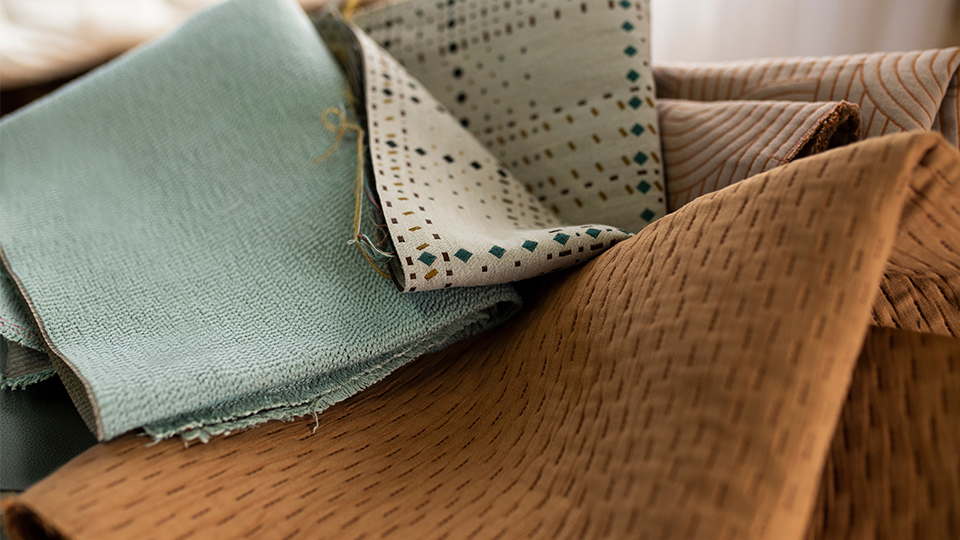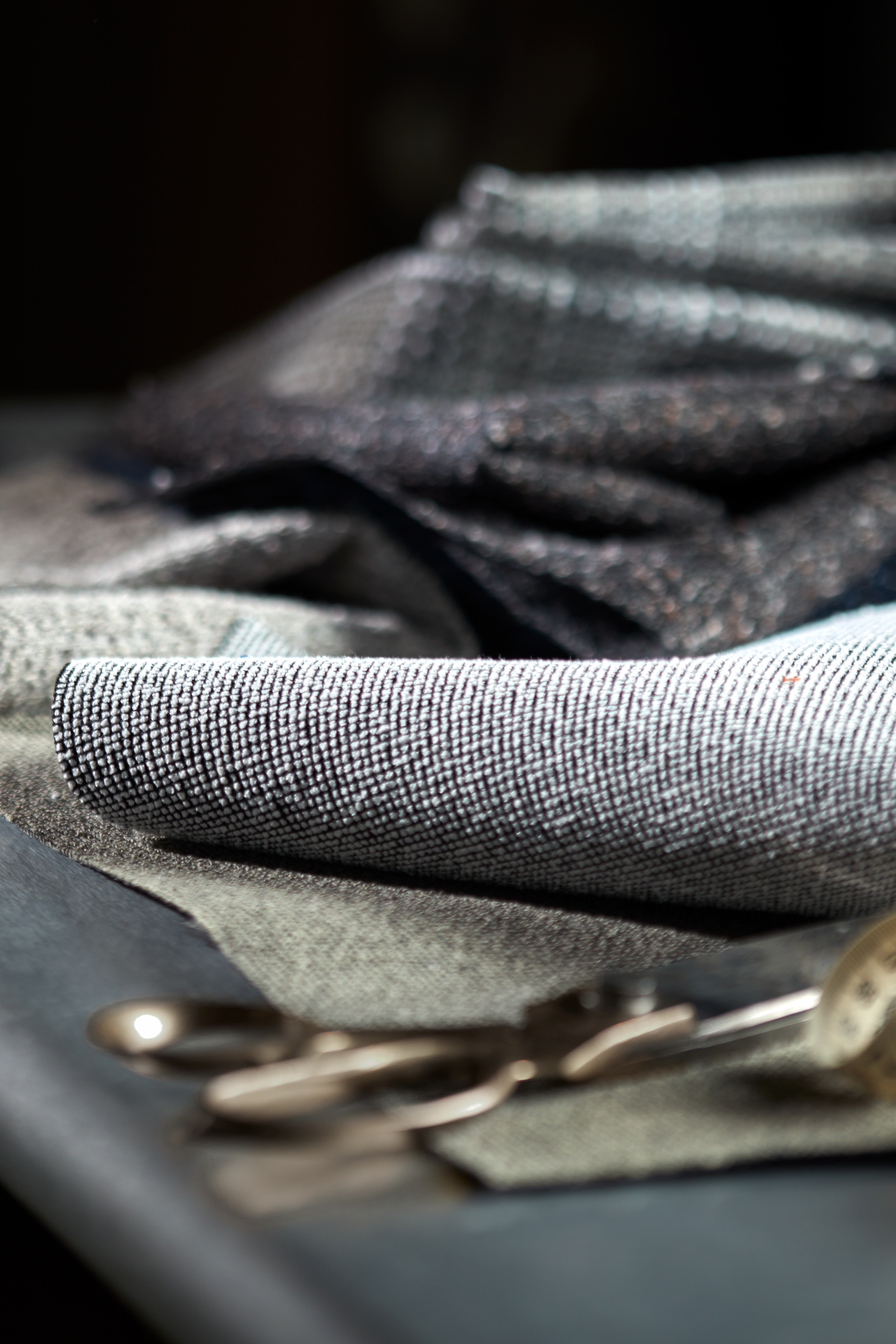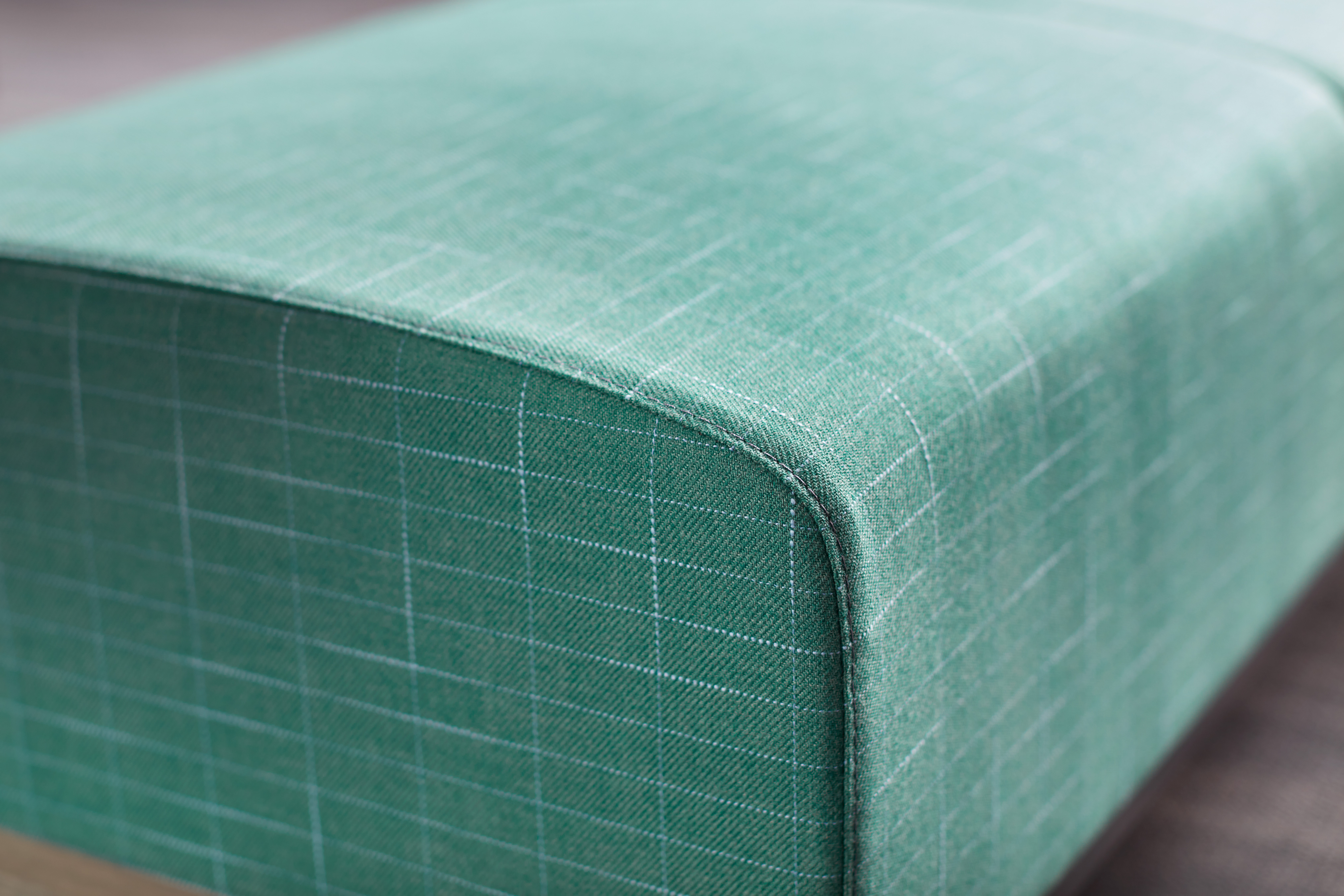All in the Details: How Textile Textures Set the Mood for Interior Design
Blog • October 27, 2023

Explore the art of integrating textile textures in interior design and learn how fabrics can be strategically chosen to create specific moods.
When you walk into an interior environment, what do you notice?
Your first response will often be a result of your initial senses—what you see, what you smell, what you hear.
Interior designers understand this all too well. In creating a mood for a space, the devil is always in the details—the details that ignite our senses and produce a visceral reaction to the environment you’ve just experienced.
But what are those details?
In the design insights that follow, we explore a particular detail that is often overlooked or taken for granted: textile textures. This comprehensive guide will help you master moods for interior design with the art of textile detailing.
Understanding Texture: More Than Meets the Eye
Beyond a mere visual element, textures engage our senses on a deeper level.
A well-chosen fabric can invite touch, providing a sensory-rich experience that invites us into the space and canvases what the eyes perceive. From the soft embrace of plush velvet to the cool, smooth finish of silk, each textile has its own story to tell.
Bouclé yarns, for example, feature knobby loops to create dramatic texture. Textiles inspired by boucle construction can stimulate intrigue and curiosity within a space, transforming those textiles into captivating works of art.
Lyric, a pattern in our Poeme Collection provides the unique, often irregular, three-dimensional texture designers look for in a quintessential bouclé. Shear yields another richly dimensional surface and tactile experience that designers often specify to provide intentional texture and even acoustic benefits.
Similarly, frieze yarns are made from tightly twisted, crimped fibers. This construction gives the yarn a springy, bouncy texture while holding its shape extremely well, which makes it ideal as an upholstery. These slightly raised fibers create a tactile experience that is both inviting and reassuring.
Our re-imagined Frieze captures the plush dimensionality of the vintage favorite and can enhance the comfort and the residential feel of any space.
The allure of such texture-rich textiles lies in their ability to transcend the ordinary, infusing a room with a sense of wonder. As you encounter these fabrics, there's an instinctual curiosity that arises – an urge to explore the intricacies of the loops and crimps, to understand the interplay between form and function.
This tactile experience goes beyond mere aesthetics; it engages the senses on a deeper level, forging a connection between the observer and the material itself.
Mood Makers: Textiles and Ambiance
Every interior space has a unique purpose. By strategically selecting textiles for that space, you can reflect and enhance that purpose.
Consider a corporate office. Sleek, tailored textures exude professionalism and efficiency. Foundational fabrics with fine textures and timeless tones ensure a seamless transition between interior spaces, supporting versatility and enduring design.
The tailored appearance of Ample is elegant, precise, and versatile for corporate interiors.
Tweed, for example, is historically made from wool and is known for its extremely warm and strong hand. In fact, tweed originated in the hills of nineteenth-century Scotland and is often associated with hunting jackets, suit coats, and luxurious blazers.
Today, tweed is representative of the diagonal rib pattern created through a twill weaving technique. When used in an environment, this construction type can still conjure up notions of strength, durability, and luxury.
Craft, a contemporary take on a twill weave, provides a soft but sturdy aesthetic. Reverie, from our Cirque collection, exudes craftsmanship and leverages a ribbed pattern that creates a tweed-inspired, timeless look. Tweed-inspired fabrics add depth, richness, sophistication, and class to any interior design.
On the other hand, when you seek to convey a cozy sense of warmth, such as in hospitality spaces, you may choose the warm, inviting touch of soft, plush textures like chenille and velvet.
Chenille yarn is created using a combination of fibers in a twisted form which creates a plush, tufted texture. The French word for caterpillar, “chenille” as a woven yarn offers a caterpillar-like appearance. The result is an understated, soft, and buttery textile with a playful vibe that fosters warmth, tranquility, and togetherness. They produce a cozy, welcoming ambiance that draws you in for a stay.
Adele features a chenille yarn with a novelty weave technique that creates a soft texture with depth and dimension. Night Cap also integrates chenille yarn but features a tighter weave that produces a decadent, velvety hand.
Velvet is another sumptuous texture that elicits warmth and comfort, embodying luxury and opulence in its very essence. Its rich, tactile surface invites touch and caresses the senses, making it a quintessential choice for elevating interior spaces.
The interplay of light and shadow on its plush surface creates a dynamic visual experience, adding depth and dimension to any interior. The inherent ability of velvet to absorb and reflect light imparts a lustrous sheen that enhances the overall ambiance of the space where it’s applied.
A designer favorite available in 20 colors, Plush offers a rich hand with a luxurious pile that elicits sophisticated coziness.
By thoughtfully incorporating such textiles, designers can manipulate the mood of a room. A space can feel intimate and comfortable, or sophisticated and upscale, simply by selecting the right textures.
Beyond a Feeling: Texture as a Touchpoint
The skilled application of various construction techniques imparts a distinctive character to a textile, serving as a compelling touchpoint and offering experiences that are entirely singular to each fabric.
Beckoning touch, especially when harmonized with unique patterns, these expertly designed and constructed textiles enrich sensory engagement and add depth to the tactile experience. A purposeful interplay of texture and pattern forms a dynamic foundation for creativity in design, allowing for the creation of truly individualized and memorable pieces.
Slub yarns offer such an opportunity. Crafted by deliberately creating small nodes in the yarn structure, the varying thickness of yarns create a subtle dimension that can add softness and comfort to a space.
With intentionally introduced irregularities, slub yarns bring a unique and appealing texture to textiles. When incorporated into interior designs, they introduce a nuanced dimensionality that can transform an overall aesthetic.
Tilt and Demi are whimsical patterns featuring slub yarns to embolden their graphic patterns and elevate the hand. Iota features a more delicate stitch woven with a slub yarn to intensify its dimensionality.
Comparable to a slub yarn, matelassé fabrics possess a unique charm, offering an exquisite visual texture akin to a finely crafted quilt. This intricate weaving technique creates a surface that appears both plush and delicately stitched, adding depth and dimensionality.
The comfortable feel of matelassé exudes an air of luxury, inviting individuals to experience a heightened sense of refinement and sophistication. When incorporated, these fabrics become more than mere decor; they become a canvas for engagement and interaction.
They summon you to take a seat, run your fingers across their inviting surface, and fully immerse yourself in the tactile experience. In this way, matelassé fabrics elevate a space, transforming it into a sanctuary of comfort and style, where every touch and every glance serves as a testament to the profound impact of thoughtfully chosen textiles.
Matelassé fabrics like Magique, Sway, and Pinch Pleat provide soft yet intriguing visuals that immediately demand attention both visually and physically.
A New Era of Texture: Digitally Printed Textiles
Non-woven textiles with digitally printed textures represent a harmonious convergence of technology and craftsmanship in the realm of textile design.
These innovative fabrics transcend conventional notions of materiality, ushering in a new era of creative expression. Digital texture transforms non-woven textiles into canvases for intricate patterns, vivid imagery, and tactile sensations, allowing interior designers to craft immersive environments that resonate with emotion and personality.
With this fusion of technology and textiles, we can play with dimensionality, depth, and design.
Curio and Bend mesmerize with digitally printed textural details reminiscent of a refined woven fabric while showcasing the wonders of color, geometry, and skilled craftsmanship.
Through this marriage of cutting-edge technology and tactile artistry, designers can craft environments that transcend the mundane, imbuing them with personality, emotion, and a unique narrative.
Textiles with faux textures are not mere adornments; they are conduits of creativity, offering dimensional interest and shaping the way we approach textile design for modern interiors.
Folie appears as a textural, felted wool but is actually a coated digitized design for a trompe l’oeil tactile experience. Edge is a silicone hybrid textile infused with fine textured detail that makes it appear woven. Rove features striking interlaced lines and pointed stitches that offer a finely woven look in a digitally printed vinyl.
Elevating Interior Design with Textile Detailing
As an interior designer, you know how subtle details often make the most significant impact. Among these details, textile textures stand out as a versatile and powerful tool for crafting your design story within impactful, emotive environments.
From the inviting embrace of plush chenille to the touchable nuances of slub yarns, each textile brings its own unique narrative to a space and contributes to an extraordinary, multi-sensory experience.
By understanding the profound impact of texture on our sensory experience, you can strategically select textiles to reflect and enhance the goals of your space. Whether you aim to exude professionalism in a corporate office or foster warmth and togetherness in a hospitality setting, the right textures transform ambiance.
Mastering textile detailing is truly an art form that elevates interior design to new heights. And our team is poised to help. Connect with a dedicated Pallas representative for a complimentary consultation regarding the integration of texture through textiles for your latest design project.
























